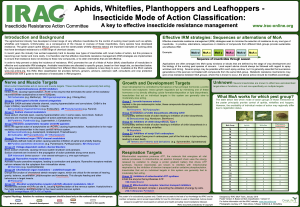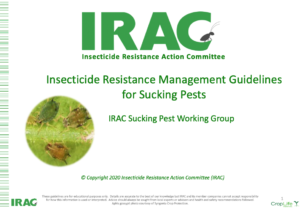Brown planthopper
Nilaparvata lugensNilaparvata lugens adults occur in macropterous (long-winged) and brachypterous (short-winged) forms. The macropterous form is about 3.5 – 4.5 mm in length. The body is brown, and the wings are transparent, with very conspicuous veins. Young nymphs are white, but they gradually become darker in older instars.
Both nymphs and adults penetrate the tissues of their rice host plants with their piercing-sucking mouthparts in order to ingest phloem-sap. Loss of nutrients and obstruction of vessels cause yellowing of leaves. Later, the plants wilt, gradually drying up and eventually dying off. In addition to the direct damage it causes, N. lugens is an important vector of rice grassy stunt virus and rice ragged stunt virus and all stages excrete honeydew, thus promoting the growth of sooty mold.
Macropterous females migrate into rice fields shortly after transplanting, laying groups of 5-15 eggs into the sheaths or midribs of leaves. The first instar nymphs hatch after 5-9 days; they molt five times during a period of 2-3 weeks. Initially, most of them develop into brachypterous adults: but as population density increases, or if food becomes scarce, the proportion developing into the macropterous form increases. During their adult lifespan of 10-30 days, macropterous females each produce about 100 eggs, brachypterous females 300 to more than 700. In the tropics, N. lugens is active all year round, and produces 3-6 generations per crop. It is not able to overwinter in temperate regions, so it migrates into these areas in the spring, often after traveling long distances.
Brown planthopper resistance profile
Insecticide resistance has been recorded in N. lugens since the early 1960‘s, when organophospahte, carbamate and cyclodiene organochlorine insecticides were the main methods of chemical control. Although further insecticide chemistry has been introduced to control hoppers, the importance of rice as a staple food crop and the reliance on insecticides for the control of insect pests has seen the continued evolution of insecticide resistance. The most recent developments has seen populations develop resistance to neonicotinoid and phenylpyrazole insecticides. At the time of writing there is no evidence of a common cross-resistance resistance between chemical classes of insecticide, however there is evidence that individual hoppers may exhibit multiple mechanisms of resistance to one or more insecticide modes of action. Currently pymetrozine is the only insecticide which is registered for rice hopper control, with no recorded cases of resistance reported
| Species | Distribution | Chemical class | Mechanisms |
|---|---|---|---|
| Nilaparvata lugens | Asia | Neonicotinoids (4A) | Cytochrome P450 mono-oxygenases (metabolic) |
| Nilaparvata lugens | China | Pyrethroids-Pyrethrins (3A) | Cytochrome P450 mono-oxygenases (metabolic) |
| Nilaparvata lugens | South and East Asia | Phenylpyrazoles (Fiproles) (2B) | Metabolic |
| Nilaparvata lugens | India, Vietnam, other Asian countries | Phenylpyrazoles (Fiproles) (2B) | A301S mutation in the RDL GABA-gated chloride channel |
| Nilaparvata lugens | Asia | Organophosphates (1B) | Altered AChE (metabolic) |
| Nilaparvata lugens | China | Buprofezin (16) | Metabolic |


